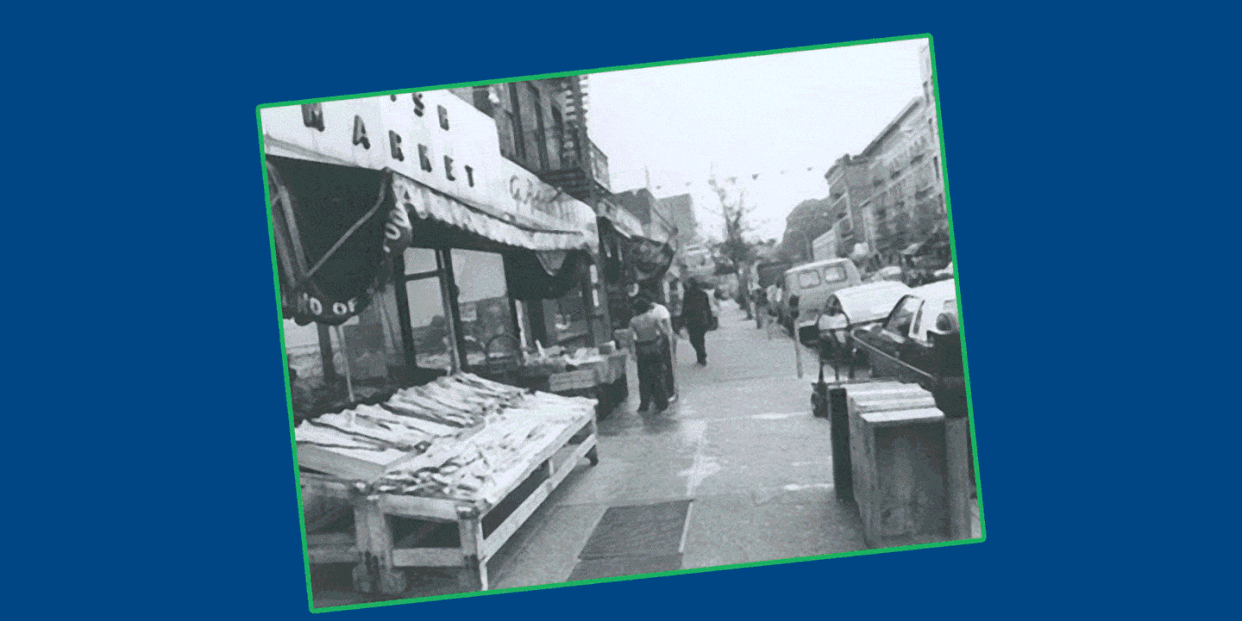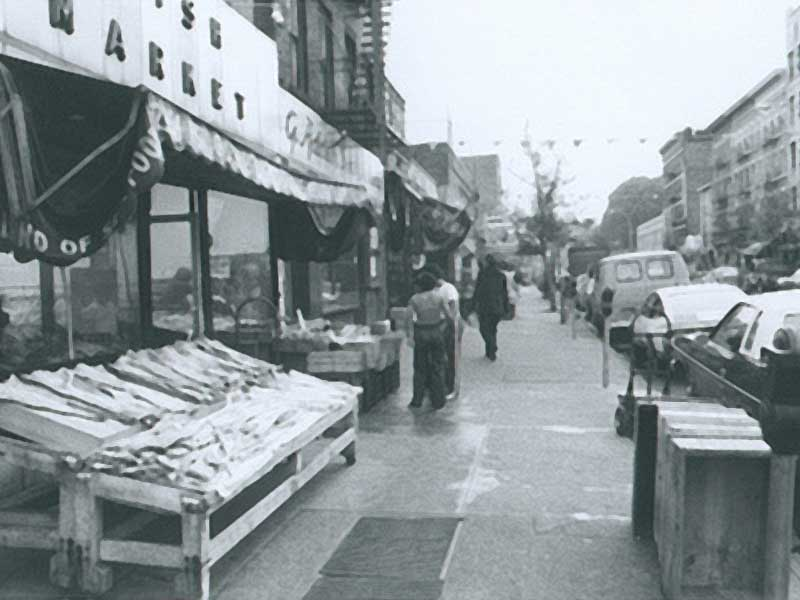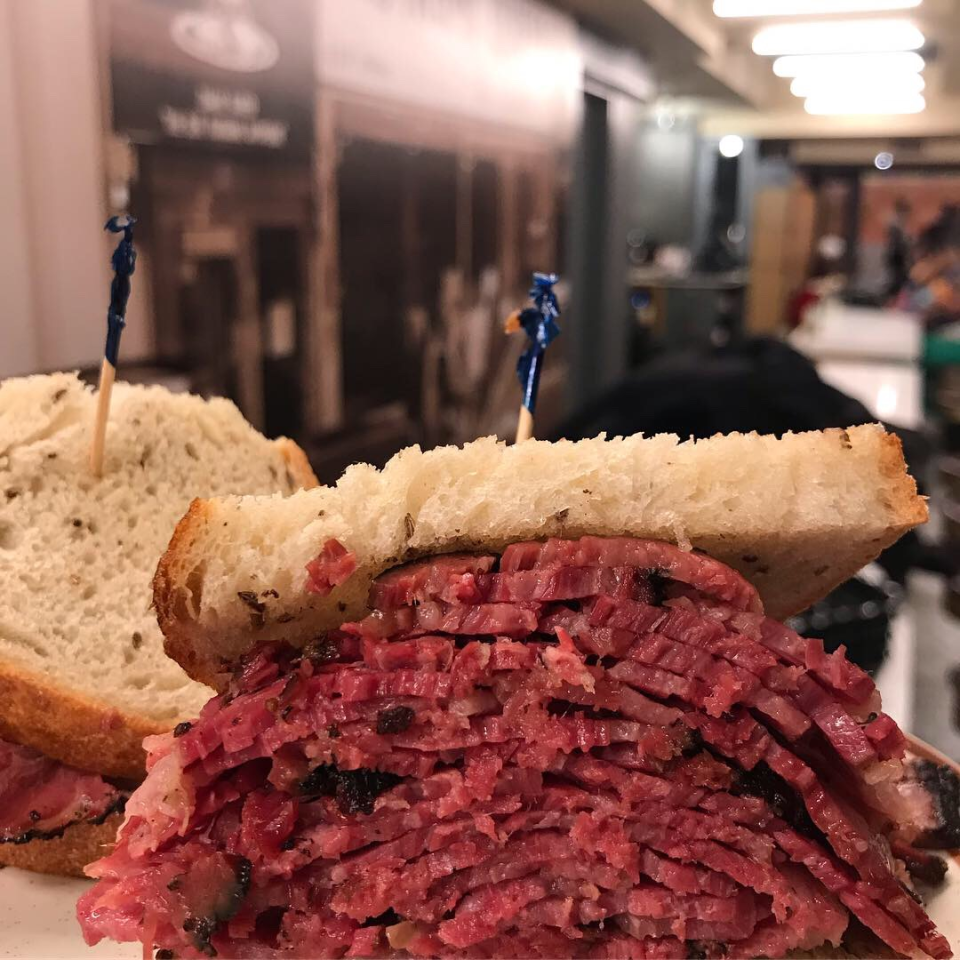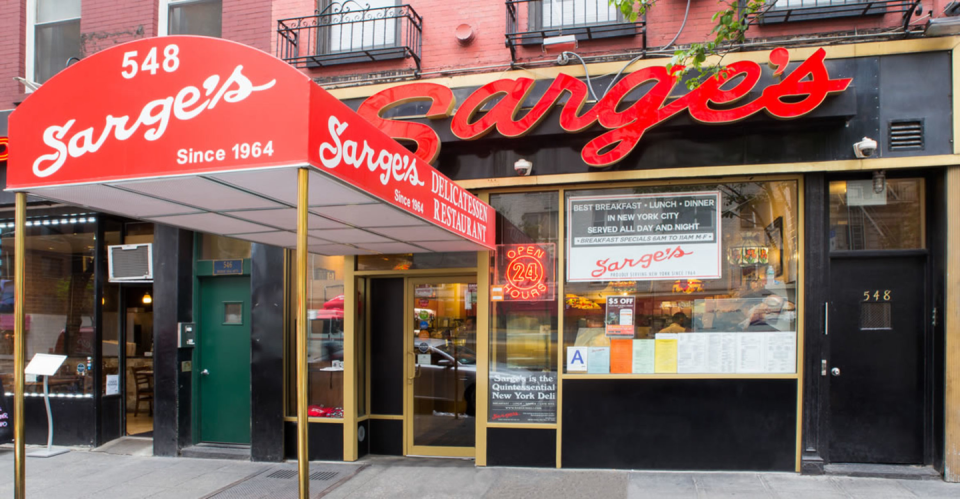The Jewish Deli Is An NYC Icon. Here’s How It’s Changed

“I’ll have what she’s having.” The quote is iconic. You probably know it’s from When Harry Met Sally, and although the corned beef and pastrami sandwich isn't what caused Sally to make such a scene in Katz's Deli, it certainly convinced the lady at the next table to try it.
This month, the New York Historical Society has an exhibit dedicated to this very scene and everything it represents. It’s called “'I’ll Have What She’s Having': The Jewish Deli, an Exhibition Examining the Mouthwatering Origins and Continuing Cultural Significance of the Quintessential New York Cuisine." The show, which runs from November 11 to April 2, 2023, will feature the history of the New York's Jewish delis, how they grew into a cultural icon, and how they're still thriving today.
Marilyn Kushner, one of the curators of the exhibit, said the show will "follow the development of the push cart into the store fronts, to people deciding to add a table or two, and how that led to the restaurants. It was a gradual development of the deli to what we know it is today."
The History Of New York's Jewish Delis

The origins of the Jewish delis we love today started in the mid 1800s by first- and second-generation German immigrants, some Jewish and some not. They opened storefronts as a way to make a living and provide food from back home to other immigrants. Many of them were inspired by German Delikatessens, stores that sold delicacies like beef frankfurters, sauerkraut, liverwurst, cold cuts, and dill pickles. When Yiddish-speaking Jews came to the U.S. and opened up similar stores, they added pastrami and corned beef and made sure everything was kosher. But it wasn’t until the 1920s when these places became more than just storefronts.
“A lot of times when survivors came here after World War II, they would gravitate towards the delis because that's where they found community,” Kushner said. “Delis became a home away from home if people didn't want to go to shul or the synagogue.” There, they could find friends and sometimes even employment.
As more Jewish delis opened in the city’s theater district, Jewish and non-Jewish actors used them as space to socialize and avoid anti-semitism. Many of the delis grew into cultural icons, eventually showing up in movies and TV shows like The Marvelous Mrs. Maisel, Billions, and of course, When Harry Met Sally.
You Go For The Pastrami

When asked what makes a Jewish deli great, deli owners interviewed for this story all pretty much had the same answer—the food.
“When you think of a Jewish deli, the first thing that pops into your mind is a pastrami sandwich and a matzo ball soup,” said Andrew Wengrover, owner of Sarge’s Delicatessen & Diner, which his great grandfather opened in 1964.
Eric Newman, junior partner at Pastrami Queen, open since 1956, agreed. “A pastrami sandwich, obviously. And it’s got to have awesome chicken matzo ball soup,” he said. The broth has to be golden and flavorful. The matzo ball has to be soft but not mushy. The pastrami sandwich has to be piled high on rye with mustard.
“Pickles,” said Yuval Dekel, owner of Liebman's Delicatessen in the Bronx, which opened in 1953. “Those pickles that are actually very important to me. Kosher deli pickles are never vinegar-based. They're always a salt brine. So if I go to a deli, I take a bite out of the pickle, and it's a vinegar pickle, right away I’m like, ‘This isn't right.’”
But there’s more to a Jewish deli than the food. It’s the vibe, as Dekel put it. “It’s the rough and tough Jewish waiter who's got some schtick that he might say,” he said. It’s also the deli counter with the glass case and hanging cured meats, the simple tables that are tightly packed in, the framed black-and-white photos of previous owners, regulars, and celebrities, and the often never-changing menu. “We're stubborn and we serve the same food we've always been doing,” Dekel continued.
How Today's Jewish Delis Survive—And Thrive

From suburbanization to wellness trends, Jewish delis have outlived many of the obstacles that the modern world has thrown at them, but not without loss. At one point, there were over 3,000 of them in the city. “There are 20 left, maybe,” Kushner said. “That's a real loss, but that's why we're telling the story again, because there are still people around who remember those delis.” And, of course, the pandemic hit them hard, too.
“It's definitely hard to make a living,” Wengrover of Sarge's said, pointing to the ever-rising cost of food. “How much more expensive can a pastrami sandwich be?” he continued. “We are charging $23.95 for a nine-ounce sandwich. But we are busy, and I don’t plan on going anywhere.”
Part of this is a change in clientele. “The regulars of old, like those people who grew up eating Jewish deli, are slowly dwindling away,” he said. “But there's definitely a younger wave of people.”
“They'll introduce their children to the food, and they'll come here and say, ‘My father brought me here and now I'm bringing my kids,’” said Dekel. “There are also people who are just foodies, and they heard of us just because of our longevity and nostalgia.”
It’s not only locals, but tourists coming to New York City who want to see, taste, and hear what a real Jewish deli is like. “They might not be able to speak English, but they say 'pastrami' and point to it,” Newman said. “It's amazing, and it really is like part of the community.”
Delivery services like GrubHub and UberEats now make up a large portion of the sales from these Jewish delis. “A lot of what you see today is the bicycles running in and out all day,” Newman said. They also rely on Goldbelly. “It saved us, to be honest,” said Dekel, who said sales from Goldbelly got them through the height of Covid.
While Jewish delis may never return to their heyday, they are thriving. Pastrami Queen took over the location of the 93-year-old deli Fine & Schapiro in 2020, and they are opening a third location in Penn Station. “We’re just going retro, old school,” Newman said of trying to keep the decor as authentic as possible. “I think people are really seeking us out for that old-school experience."
You can visit the exhibit “I’ll Have What She’s Having” at the New York Historical Society from November 11, 2022 to April 2, 2023.
You Might Also Like

